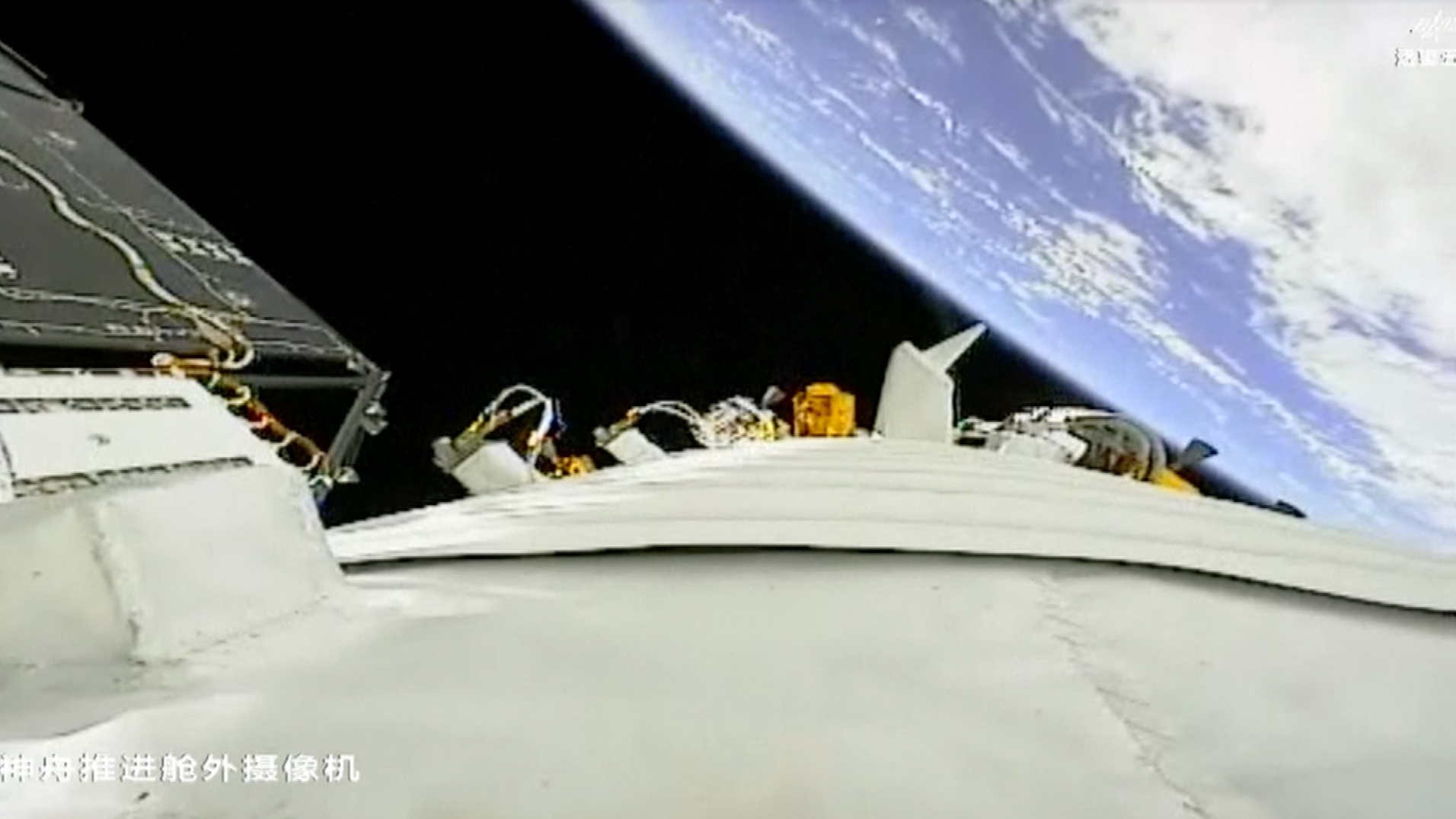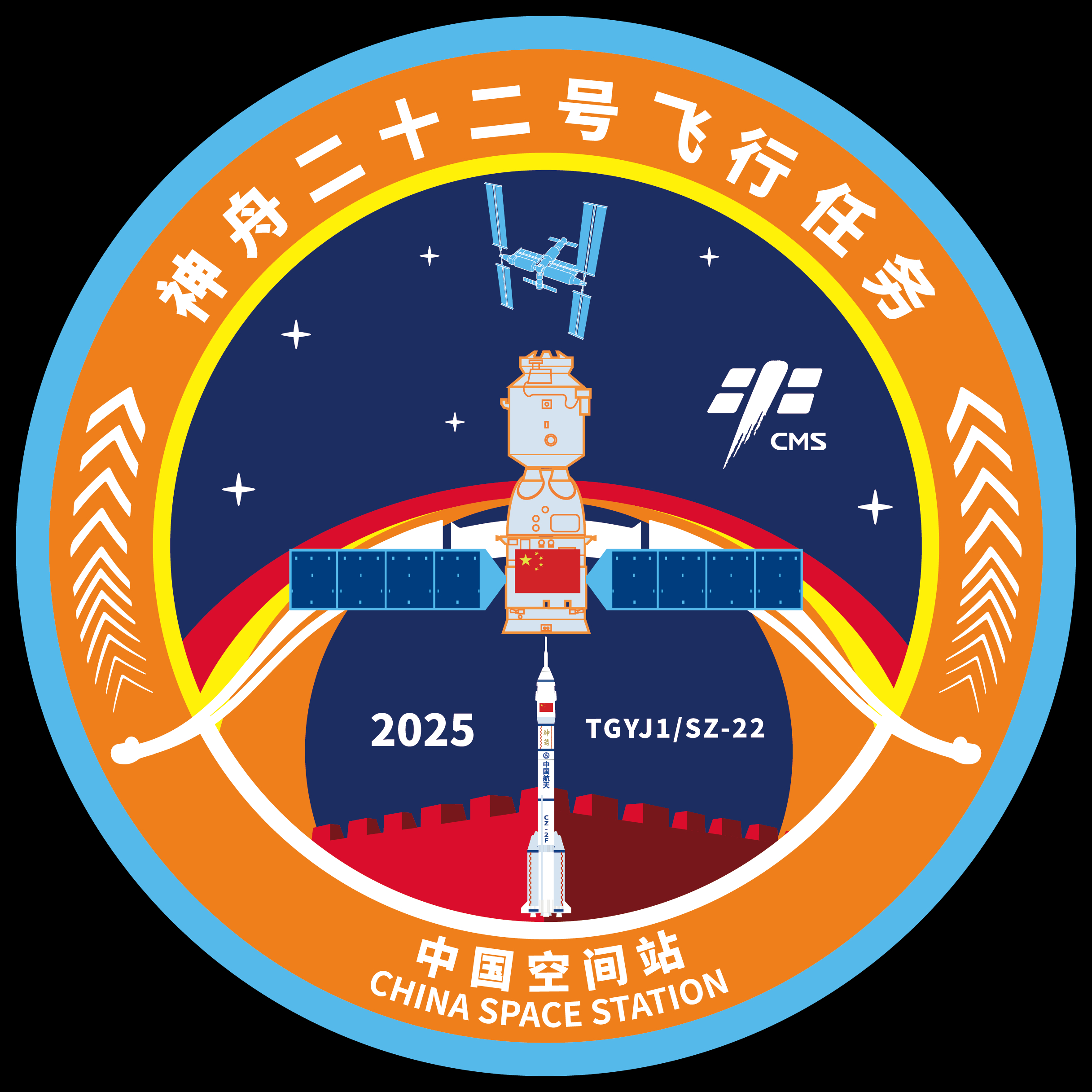China launches uncrewed Shenzhou capsule for 3 astronauts stuck on Tiangong space station
The Shenzhou 22 mission lifted off at 11:11 p.m. ET on Monday (Nov. 24)

Three Chinese astronauts won't be "stranded" in orbit for much longer.
A Long March 2F/G rocket lifted off from the Jiuquan Satellite Launch Center in northwest China tonight (Nov. 24) at 11:11 p.m. EST (0411 GMT and 12:11 p.m. on Nov. 25 Beijing time).
The rocket sent the Shenzhou 22 spacecraft toward China's Tiangong space station in low Earth orbit, on a dramatic and unprecedented rescue mission.

Shenzhou missions typically fly three astronauts to Tiangong, where they stay for six-month stints. However, the Shenzhou 22 vehicle is uncrewed, because it will serve as the ride home for the orbiting outpost's three current residents.
Those astronauts are flying on the Shenzhou 21 mission, which arrived at Tiangong on Halloween night. But the spacecraft they rode up on is already gone; it was pressed into service to take their predecessors, the Shenzhou 20 trio, home on Nov. 14.
The Shenzhou 20 astronauts were supposed to leave Tiangong on Nov. 5, but inspections revealed a crack in the window of their spacecraft, the apparent consequence of an impact by a piece of space debris. Chinese space officials delayed the crew's departure to analyze the issue, then ultimately deemed the Shenzhou 20 craft unsafe to take astronauts down to Earth.
So, for the past 10 days, the Shenzhou 21 astronauts have been in a somewhat precarious position: Should Tiangong suffer a serious problem, they have no way to safely evacuate.
Breaking space news, the latest updates on rocket launches, skywatching events and more!

That is about to change. Provided that Shenzhou 22 docks with Tiangong as planned about 4.5 hours after launch, the Shenzhou 21 astronauts will serve out the remainder of their half-year mission aboard the outpost. They will be relieved by the three astronauts of Shenzhou 23, which is expected to launch in April 2026.
The Shenzhou 20 capsule will need to leave before Shenzhou 23 arrives to free up a docking port. Chinese space officials have said the damaged spacecraft will remain in orbit for a spell to host some experiments, but they have not yet announced a timeline for its departure.
The Shenzhou ordeal follows on the heels of another "stranded astronaut" saga. Boeing's Starliner astronaut taxi experienced problems shortly after its June 2024 launch to the International Space Station (ISS) on its first-ever crewed flight, which was supposed to last just 10 days or so. NASA ultimately decided to bring the vehicle home uncrewed in September of that year, which happened without incident.
The two Starliner astronauts, NASA's Suni Williams and Butch Wilmore, ended up staying on the ISS for more than nine months (though they were never actually stranded, as at least one functional "lifeboat" spacecraft was always attached to the ISS during their stay). The duo ultimately came home on a SpaceX Dragon capsule in March of this year.
The two off-nominal situations have increased calls in some quarters for a "space rescue service" — one that could help astronauts in need in a timely fashion, whichever country they may represent.

Michael Wall is a Senior Space Writer with Space.com and joined the team in 2010. He primarily covers exoplanets, spaceflight and military space, but has been known to dabble in the space art beat. His book about the search for alien life, "Out There," was published on Nov. 13, 2018. Before becoming a science writer, Michael worked as a herpetologist and wildlife biologist. He has a Ph.D. in evolutionary biology from the University of Sydney, Australia, a bachelor's degree from the University of Arizona, and a graduate certificate in science writing from the University of California, Santa Cruz. To find out what his latest project is, you can follow Michael on Twitter.
You must confirm your public display name before commenting
Please logout and then login again, you will then be prompted to enter your display name.